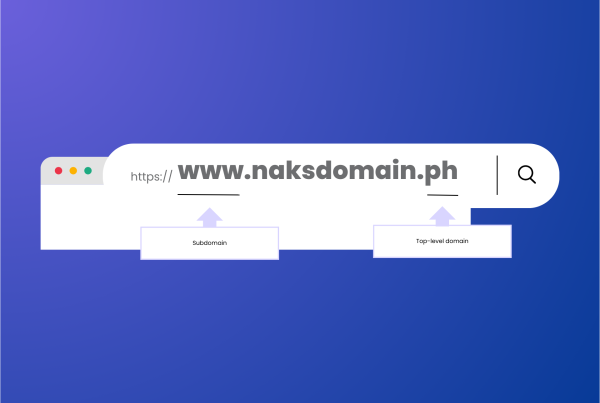Updated: 15 April 2025 • 8 minutes Read
Despite producing high-quality content, many bloggers struggle to generate meaningful traffic to their blog posts. One major culprit? Ineffective keyword selection. In the competitive digital marketing landscape of 2025, understanding how to research, prioritize, and implement the right keywords is essential to the success of your web pages and content strategy.
This comprehensive guide outlines advanced marketing strategies, actionable tips, and must-have tools to help you master keyword selection, improve user experience, and elevate your SEO game.
Table of Contents
- What is Search Engine Optimization (SEO)?
- Why Keyword Selection Matters in 2025
- Define Your Blog’s Purpose and Focus
- Build a Detailed Target Persona
- Understand Keyword Types
- Align Keywords with Search Intent
- Follow a Proven 4-Step Keyword Selection Process
- Top Tools for Keyword Research in 2025
- Advanced Content Optimization Techniques
- Final Thoughts
What is Search Engine Optimization (SEO)?
Search Engine Optimization (SEO) refers to the process of optimizing your website or blog content to increase its visibility in search engine results pages (SERPs). Although search engines like Google don’t fully disclose their ranking algorithms, ongoing analysis and data-backed experimentation reveal key factors that influence visibility and ranking pages.
Effective SEO results in higher rankings, which leads to increased organic traffic, better visibility to potential customers, higher conversion rates, and stronger brand presence. Strategic keyword usage and creating content that aligns with user intent are at the heart of this process.

Why Keyword Selection Matters in 2025
Keyword selection is more than inserting popular phrases into your blog posts. It’s about understanding user intent, aligning with content themes, and outperforming the competition.
- Without relevant keywords, even the most high quality content may fail to attract traffic.
- With specific keywords, your content is more discoverable by users actively searching for related topics on search engines like Google.
As search engines marketers adapt to algorithm updates, context, user behavior, and experience become more critical. Matching your content to the actual queries users are entering is essential for discoverability and engagement.

-
Define Your Blog’s Purpose and Focus
Before diving into keyword research, ensure your blog has a clear niche. A well-defined blog theme enables better alignment with relevant keywords, improving authority and topical relevance.
Example:
- Vague niche: Cooking, investing, travel
- Specific niche: Budget-friendly home recipes for working parents
This clarity allows search engines like Google to better understand your content and match it with the right target audience, increasing your blog’s ranking potential.
-
Build a Detailed Target Persona
To select the most effective keywords, you must know exactly who you’re creating content for.
Targeting includes:
- Demographics: Age, gender, location
- Psychographics: Interests, challenges, behaviors
Example Persona:
- Age: 30-38
- Occupation: Sales manager
- Interests: Quick meals, saving money, family activities
Understanding your audience allows you to select keywords that align with their needs and expectations, increasing the effectiveness of your product pages or blog posts.
-
Understand Keyword Types
Keywords can be broadly categorized by search volume and specificity:
Big (Head) Keywords
- High volume (10,000+ searches/month)
- High competition
- General and often ambiguous
- Example: “diet”
Long-Tail Keywords
- Lower volume (less than 1,000 searches/month)
- More specific keyword phrases
- Easier to rank
- Higher conversion potential
- Example: “easy vegan diet recipes for beginners”
Using a mix of both keyword types ensures your web pages are competitive yet targeted enough to convert potential customers.
-
Align Keywords with Search Intent
Search intent refers to the reason behind a user’s query:
- Informational: Seeking knowledge (“what is intermittent fasting?”)
- Navigational: Looking for a specific site (“MyFitnessPal login”)
- Transactional: Ready to purchase a product or service (“buy protein powder online”)
Creating content that aligns with these intentions helps retain users, boosts engagement, and enhances user experience.
-
Follow a Proven 4-Step Keyword Selection Process
Step 1: Identify a Main Keyword
Choose a primary, relevant keyword that reflects the theme of your blog post and has adequate search volume.
- Use Google Trends to confirm its seasonal and current relevance.
Step 2: Gather Related Keywords
Expand your keyword list by exploring:
- Google Autocomplete and “Related Searches”
- Otter Keywords, AnswerThePublic, and other digital marketing tools
- Competitor content using SEO Check! or Ahrefs
Step 3: Categorize and Prioritize
Organize keywords based on:
- Search intent (informational, transactional, navigational)
- Funnel stage (awareness, consideration, decision)
- Product or service attributes
- Estimated search volume
Prioritize keywords that are most likely to attract your target audience and meet your content goals.
Step 4: Review and Refine Regularly
SEO is not a one-time effort. Use Google Search Console to monitor performance and adapt based on trends. Refresh older content with updated keywords to maintain visibility.
-
Top Tools for Keyword Research in 2025
Utilize these tools to enhance your keyword research and digital marketing strategy:
Monitor keyword popularity, seasonality, and geographic interest.
Evaluate which keywords drive traffic, and optimize based on impressions and click-through rates.
Estimate search volumes and understand keyword competitiveness for both organic and paid efforts.
SEO Check!
To spy on competitors and find SEO opportunities, tools like Ahrefs, SEMrush, SimilarWeb and SpyFu let you analyse their top-ranking pages, backlinks, and keyword strategies. These tools help you identify gaps, benchmark performance, and turn competitor strengths into your own wins.
Visualize commonly asked questions and search queries to better match user needs.
-
Types of Content That Benefit from Keyword Optimization
Incorporating targeted keywords improves the visibility and performance of various content types:
- Blog posts: Educate, inform, or entertain your audience
- Product pages: Promote and convert with optimized descriptions
- Landing pages: Generate leads or drive specific actions
- How-to guides: Answer common queries and boost informational rankings
Matching keyword strategy to the right type of content maximizes both reach and ROI.
-
Advanced Content Optimization Techniques
To ensure every piece of content you publish ranks and drives visibility, implement these advanced optimization techniques:
Optimize for Featured Snippets
Structure content with bullet points, numbered lists, tables, and clear headings to improve your chances of appearing in position zero.
Use Semantic SEO
Incorporate related terms, synonyms, and entities to give search engines a fuller understanding of your topic and improve topical authority.
Improve Core Web Vitals
Ensure your website loads quickly, is mobile-friendly, and offers a stable layout. Google’s ranking algorithm favors strong technical performance.
Internal Linking Strategy
Link to related blog posts and product pages within your site to distribute link equity and keep users engaged longer.
Update and Repurpose Content
Refresh old content with new data, visuals, or formats (videos, infographics). Repurpose high-performing posts into new types of content.
Utilize Schema Markup
Add structured data to help search engines understand your content’s purpose and enhance your search appearance with rich snippets.
Enhance Visual Content
Use relevant images with descriptive alt text. Optimize file names and compress images to reduce load time without compromising quality.
Craft Compelling Meta Descriptions
Write unique, keyword-rich meta descriptions for each page to improve click-through rates from search results.
Naksdomain: Domain Price Comparison & Hosting Reviews
If you’re looking to kickstart your SEO journey with the right foundation, your domain and hosting provider matter just as much as your keyword strategy. One reliable option is Naksdomain, a platform that helps you compare domain prices across major registrars and provides in-depth hosting reviews for your reference. It’s tailored for bloggers, entrepreneurs, and digital marketers looking for reliable and cost-effective solutions.
Final Thoughts
Effective keyword selection is a foundational pillar of modern search engine optimization (SEO). By:
- Defining your niche
- Understanding your target audience
- Aligning with user intent
- Utilizing powerful keyword tools
- Creating content that meets expectations
- Applying advanced optimization techniques
You can consistently develop blog posts and web pages that rank, convert, and deliver value.
Remember: SEO success is a long-term effort. Continually analyze performance, adapt your approach, and fine-tune your marketing strategies to stay competitive in 2025 and beyond.
Topics: SEO
Don’t forget to share this post!


